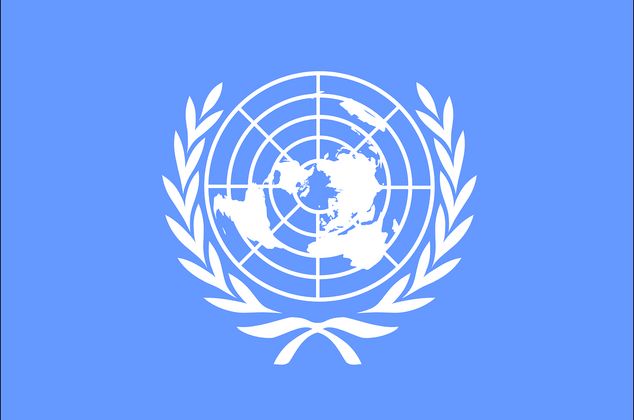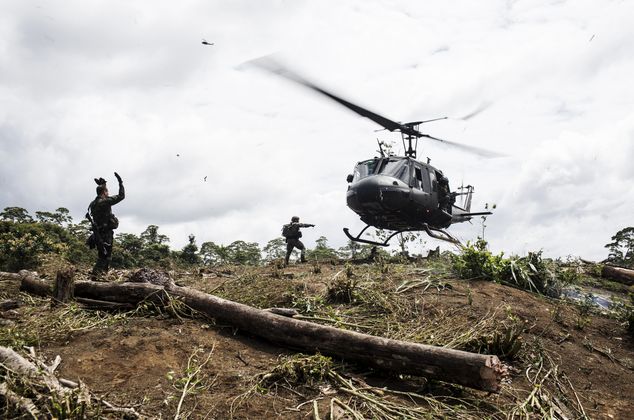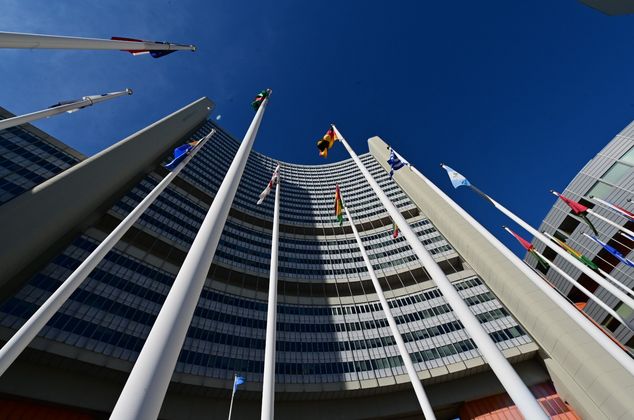Resilience and vulnerability in times of the pandemic
Resilience and vulnerability in times of the pandemic - and what we can learn from this for the development of drug crop cultivation areas
Around the world, several million people make a living from illegal drug crop cultivation. Their living situation is mostly fragile. What happens if a pandemic is now added to the mix? How do those affected deal with it and how can they be better prepared for future crises?
Numerous studies examine how the Covid-19 pandemic affects illicit drug markets. We asked ourselves: how does the Covid-19 crisis affect the lives of families who grow the raw materials to produce heroin or cocaine, or who are in the process of escaping the poverty trap of illicit cultivation? The GPDPD commissioned a study on behalf of the German Federal Ministry for Economic Cooperation and Development (BMZ). The study paints an initial picture of the situation in drug cultivation areas in eight selected countries in Asia, Latin America and the Balkans - and what we can learn from this for the development of a sustainable drug policy.
It became clear that the situation is very different - but has one thing in common: Pre-existing problems have worsened since the pandemic began in early 2020. The Covid-19 crisis provides the ideal breeding ground for the spread of illicit economies. Smallholder farmers in areas of drug crop cultivation are now more at risk than ever of slipping deeper into illegality. Yet there are also those who manage to resist this on their own.
The big picture
Let's first take a look at the macro level: the Covid-19 pandemic directly or indirectly affects almost everyone on this planet. It forces societies into lockdown and threatens economic livelihoods. National and international containment efforts to minimise the spread of the SARS-CoV-2 coronavirus have led to the temporary disruption of global value chains. Borders are more tightly controlled or even closed. Mobility of people and goods has come to a halt in many places. The World Bank predicted that global gross national product will shrink by up to 8 percent by 2020. Developing and emerging countries are particularly affected by this.
Poverty and a lack of alternatives in structurally weak rural areas, where the state is hardly present, are driving people into illegal cultivation. Their lives are already characterised by insecurity and marginalisation: they have no access to a functioning infrastructure, markets, political participation, basic services or educational institutions. Violence and conflict are often part of everyday life. The economic downturn only makes them more dependent on drug crop cultivation.
Organised crime has suffered little from the Covid-19 crisis. It lives in a kind of perpetual crisis and takes advantage of every opportunity. Its factions have quickly adapted their modus operandi, shifting to various illicit markets and alternative trafficking methods. They have diversified their supply and distribution channels and have been able to meet the challenges of the current global situation. The drug business continues to flourish.
Those who seize opportunities survive
However, not only the big players are changing their strategies; smallholder families living in cultivation areas are also being forced to diversify their income. Already in recent years, numerous studies have shown that smallholder farmers in countries such as Colombia, Afghanistan and Myanmar are expanding their sources of income through other illegal activities to ensure their survival - such as the production of synthetic drugs, illegal gold mining or deforestation. The study commissioned by GPDPD shows that the socio-economic impact of the pandemic could exacerbate this trend.
In addition to expanding drug markets in affected countries, such changes can lead to increased forced migration and internal displacement. Although the proportion of smallholder families affected is modest, their fragile socio-economic situation plays an important role in intensifying conflicts and the spread of illegal activities. This in turn affects the development of entire regions and countries and further slows down their development.
Defying the crisis
Smallholder farmers in Alternative Development projects have proven that adaptation can be done differently. Particularly well positioned were those, who practice diversified agriculture and can fall back on their own food reserves, as well as those, who have access to the Internet and knowledge and use instruments of self-organisation. They are defying the crisis with technical innovations and local initiatives.
Whereas they previously relied on help from an international organisation, cooperatives in Myanmar and Colombia took the logistics of their goods into their own hands. Other collective farms, such as in Afghanistan, set up an initiative to serve the local market and secure sales of their products. Thus, during the quarantine period, Afghan farmers benefited from increased local demand for vegetables, fruits, and poultry, which has been affected by restrictions on cross-border trade and imports from other countries. The resilience of these farming families and communities is no accident - they all participate in Alternative Development projects.
Learning from the crisis
What the study shows: This crisis is an opportunity to learn and shape change processes that must be seized now. We can learn a lot from the study about "vulnerability." To what extent are communities particularly at risk and vulnerable? And vice versa: How can smallholder farmers best cope with such crises and what conditions must be in place in order to do so? Governments and international development organisations should now stimulate this learning process through analysis and study in order to increase resilience in vulnerable and affected regions and develop early warning systems that can prevent some of the worst economic and social impacts of crises and disasters. We have the evidence before us today. It just needs to be compiled and development-oriented drug policy needs to take it into account. The Alternative Development approach offers the most effective concept for this.
About the study
This article is based on the as of yet unpublished study "Building on uncertainty: the impact of Covid-19 on small farmers, Alternative Development and the illicit economy" by Dr Jorrit Kamminga and was commissioned by GPDPD on behalf of the German Federal Ministry for Economic Cooperation and Development (BMZ). The study was conducted between July and September 2020. Countries involved in this study are Afghanistan, Albania, Bolivia, Colombia, Laos, Myanmar, Peru and Thailand. Dr Kamminga specialises in drug policy with a security and development nexus. He advises, among others, the United Nations Office on Drugs and Crime (UNODC) and contributed to the World Drug Report 2015 and the Bulletin on Narcotics 2017. In both, he addressed the issue of Alternative Development.
Recommendations for national governments:
- (Re)evaluate, in consideration of the pandemic, the needs of the most vulnerable farming communities and particularly those (at risk of becoming) involved in illicit drug crop cultivation;
- Promote nationwide studies to understand how districts and regions have been affected differently by the pandemic and what the result have been in terms of a change to illicit drug cultivation and production, local prices and access to markets;
- Promote cost-benefit analyses looking into the costs of short-term eradication versus the costs of long-term Alternative Development or broader rural development programmes;
- Support local market(ing) opportunities in line with shifted consumption and lifestyle patterns.

Recommendations for national government and international cooperation agencies:
- Invest in early warning systems to prepare for similar shocks happening in the future. While some effects will probably remain difficult to predict, there are others about which we have learned a lot during the current pandemic, such as:
- The return or displacement of migrant workers, the corresponding decrease in remittances, and the effects on local prices and job markets;
- The knowledge about the various planting and harvesting seasons, as well as about storing opportunities and timelines for perishable goods;
- The extent to which illicit crops are a monoculture or part of a more diversified range of products;
- The consequences for food security; and the
- Absorption capacity of local markets.
- Invest specifically in infrastructure and internet connectivity in remote rural areas to accompany new ways of working with farmers’ cooperatives and providing technical assistance;
- Invest in local capacities and networks to provide technical assistance and other support to farmers, cooperatives and agro-industries.
- Invest in the promotion of ecotourism and other “non-agricultural” licit activities.

Recommendations for international agencies supporting Alternative Development:
- Investigate whether some kind of ‘rapid response’ Alternative Development interventions could be designed that could be implemented quicker, for example, in response to relatively favorable developments such as decreasing prices for coca or opium poppy. Such adaptation will probably never be as quick and agile as actors in the illicit economies adapt (or as quick as farmers can plant more coca), but some targeted community interventions could probably be implemented quicker to continue to strengthen the push for more diversified and sustainable options in the legal economy;
- Promote more public-private partnerships and linkages with private companies to support Alternative Development;
- While small-scale and short-term Alternative Development projects can be useful to alleviate local needs and assist local communities, start a broader policy discussion about how Alternative Development links with national rural development programmes to be able to address the broader challenges and root causes of conflict such as access to land, displacement and climate change.




